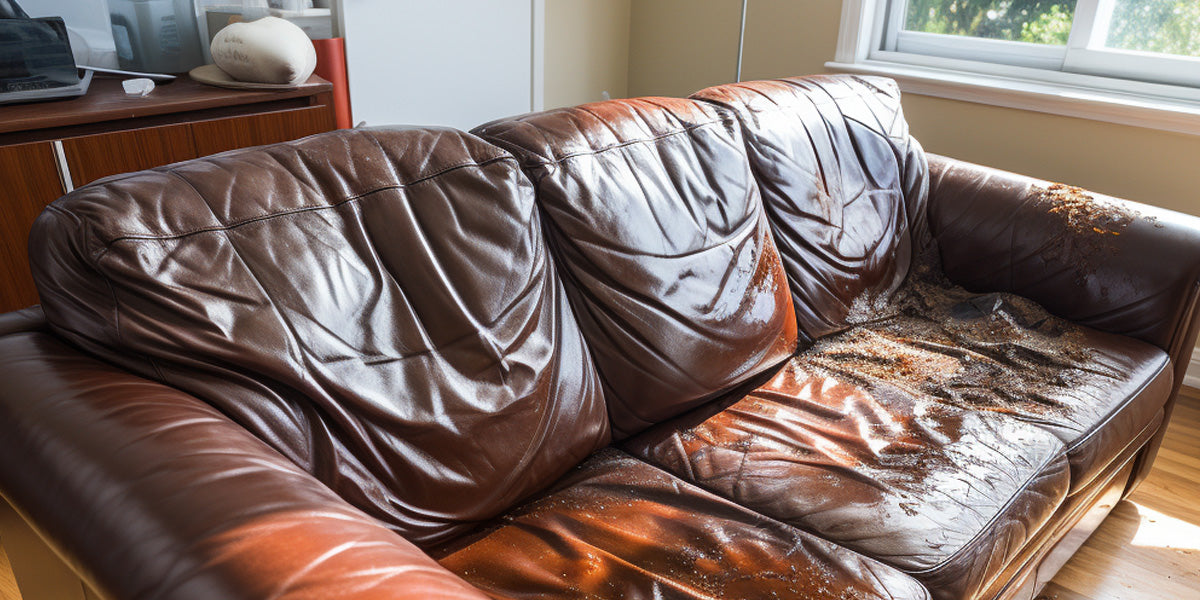Dealing with mold on your leather furniture can be a daunting task, but with the right approach, it can be effectively removed and prevented. So, how to clean mold from Leather Furniture?
In this article, I will guide you through the process of identifying, removing, and preventing mold from leather furniture, ensuring that your cherished pieces remain in top condition.
Identifying the mold on your leather furniture
Visual inspection
When inspecting your leather furniture for mold, look for any visible signs of mold growth. This can appear as black, green, or white spots on the surface of the leather.
Musty odor
In addition to visual inspection, pay attention to any musty or damp odor emanating from the furniture. This can be a telltale sign of mold growth, even if it is not immediately visible.
Precautions before cleaning

Protective gear
Before tackling mold removal, it is essential to protect yourself with gloves, a mask, and goggles to prevent exposure to mold spores.
Ventilation
Ensure that the area where the furniture is located is well-ventilated to prevent the spread of mold spores during the cleaning process.
Removing mold from leather furniture

Gentle vacuuming
Start by gently vacuuming the affected areas of the leather furniture using a soft brush attachment. This will help remove any loose mold spores and debris from the surface.
White vinegar solution
Mix equal parts of white vinegar and water in a spray bottle and lightly mist the affected areas of the leather. Use a soft cloth to gently wipe the surface, then allow it to air dry. The acidity of the vinegar helps to kill mold spores and prevent further growth.
Commercial leather cleaner
If the mold growth is extensive or stubborn, consider using a commercial leather cleaner specifically designed to remove mold and mildew. Follow the manufacturer’s instructions carefully to ensure safe and effective use.
Preventing mold growth on leather furniture

Regular cleaning and maintenance
Regularly clean and condition your leather furniture to prevent the buildup of dirt and moisture, which can contribute to mold growth. Use a mild leather cleaner and conditioner to keep the leather supple and resistant to mold.
Proper ventilation and humidity control
Ensure that the room where the furniture is located is well-ventilated and maintain a consistent humidity level to prevent mold growth. Use a dehumidifier if necessary to control moisture levels in the air.
By following these steps, you can effectively clean mold from your leather furniture and take measures to prevent its recurrence. Remember to always prioritize safety and take the necessary precautions when dealing with mold. With proper care and maintenance, your leather furniture can remain a beautiful and long-lasting addition to your home.
FAQs
-
How do you get mold out of leather seats?
Car Seats: Use a soft-bristled brush or a dry cloth to remove any loose mold spores from the leather. Clean the affected area with a solution of equal parts rubbing alcohol and water. Rinse with a damp cloth and let the leather air dry. Apply a leather conditioner once the leather is dry.
-
How do you get mold and mildew out of a couch?
Rubbing alcohol: Pour a small amount of alcohol on the visible mould stains and allow it to settle into the fabric. Use a brush to scrub the mould from the couch fabric. Use a wet cloth to wipe away any remaining mould before allowing it to dry completely.
-
Is rubbing alcohol bad for leather?
Most importantly, avoid alcohol and abrasive solvents for leather products. The best way to remember what you can and can’t use on your leather is to keep this in mind: The two most commonly used chemicals that will cause severe damage to your leather are rubbing alcohol and acetone.
Originally posted 2023-05-15 03:05:12.

